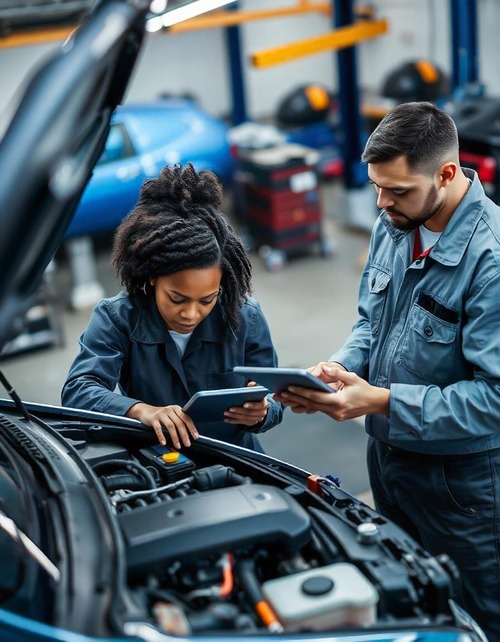
The rate of technological advancement has been exponential in recent years. However, vehicle diagnostics still rely on labor-intensive, time-consuming manual practices. This reliance often leads to increased operational costs, missed defects and reduced customer satisfaction.
The recent innovations in artificial intelligence, connectivity and automation have finally propelled vehicle diagnostic technology into the 21st century. Now, there are countless modern solutions. Which will drive the most value? Are any of them particularly impressive?
Repair Shops Need New Vehicle Diagnostic Technologies
Since automotive manufacturers switched from onboard diagnostics (OBD) to OBD2 in the late 1990s, cars’ technical components have advanced. However, the number of skilled technicians has not.
The automotive industry is in dire need of technicians. According to the TechForce Foundation’s 2024 Supply and Demand report, it will need 971,000 new technicians — including 471,000 automotive techs and 101,000 collision techs — from 2024 to 2028.
Although more people completed automotive programs in 2023 than in 2022 or 2021, the number of people leaving the profession still outpaces the amount entering.
It’s not just the workforce that is changing. Vehicles are evolving, too. Cars have more electrical systems than ever before, complicating inspections and maintenance. The industry doesn’t just have a labor shortage — skill scarcity is an issue, too.
Diagnostic technology can compensate for labor and skill scarcity, helping repair shops finish jobs faster and satisfy their customers.
Vehicle Diagnostic Technologies to Watch for in 2025
As automotive systems get more intelligent, so does diagnostic technology. Keep an eye out for these three significant innovations in 2025.
Real-Time Diagnostics
The faster you get insights into a car’s health and performance, the sooner you can start on repairs. Dashboards that display problems as they are found are a huge help. Real-time diagnostic data is quickly becoming an industry staple for this reason.
Mobile Diagnostics
What happens when you need to travel to a customer’s garage or troubleshoot a problem on the side of the road? An OBD2 scanner is often insufficient for troubleshooting at the professional level — especially for models with advanced electronic components.
Modern tablets utilize cloud computing technology and modern communication protocols to enable fast, secure connections.
The VD70S is a flagship mobile tablet built for scenarios like this. It has built-in wireless connectivity but can switch to a wired USB connection in areas with weak signals. This way, you can pull up apps and information wherever you are.
Predictive Diagnostics
Predictive diagnostics is ideal for truck fleets and work vehicles. With enough historical and current data, these tools can forecast when components will need repairs. This way, you don’t have to wait for something to break to fix it.
Features Driving Vehicle Diagnostics Into the 21st Century
If you pay attention, you will notice most modern diagnostic technologies have similar capabilities. This handful of features is bringing the automotive industry into the next century.
Connectivity is key. Remote access and over-the-air software updates, delivered wirelessly, enable you to use your tools wherever you are. Thanks to advances in telecommunication architecture and communication protocols, you don’t have to worry about slow speeds or lost data packets.
Aside from these functional improvements, AI is the other major feature every company seems to offer.
Many startups and flagship products have received funding because investors know how powerful AI is. For instance, DC Connected Car — a German software company — raised more than $2.29 million in 2024 for its machine-learning diagnostic tool.
A single algorithm can analyze massive amounts of information in moments and extract hidden insights from complicated datasets. One equipped with natural language processing can talk in plain language — no code required.
All the talk about AI isn’t just talk. In 2024, a BMW dealership in Honolulu, Hawaii, unveiled the world’s first magnetic resonance imaging (MRI) scanner for vehicles. It takes a 360-degree scan when a car drives through, and then AI analyzes those images. It reduces inspection time by 50%, according to one spokesperson.
With AI, you can automate inspections and accurately forecast maintenance needs. If you use an algorithm from a third-party vendor, you don’t even need to worry about updating or retraining it.
Is This the Finish Line for Vehicle Diagnostic Technology?
Vehicle diagnostic innovations have come a long way since OBD1 was first unveiled. However, there is still much room for growth. Depending on how cars evolve, the devices future repair shop technicians use may not even resemble today’s tools.

